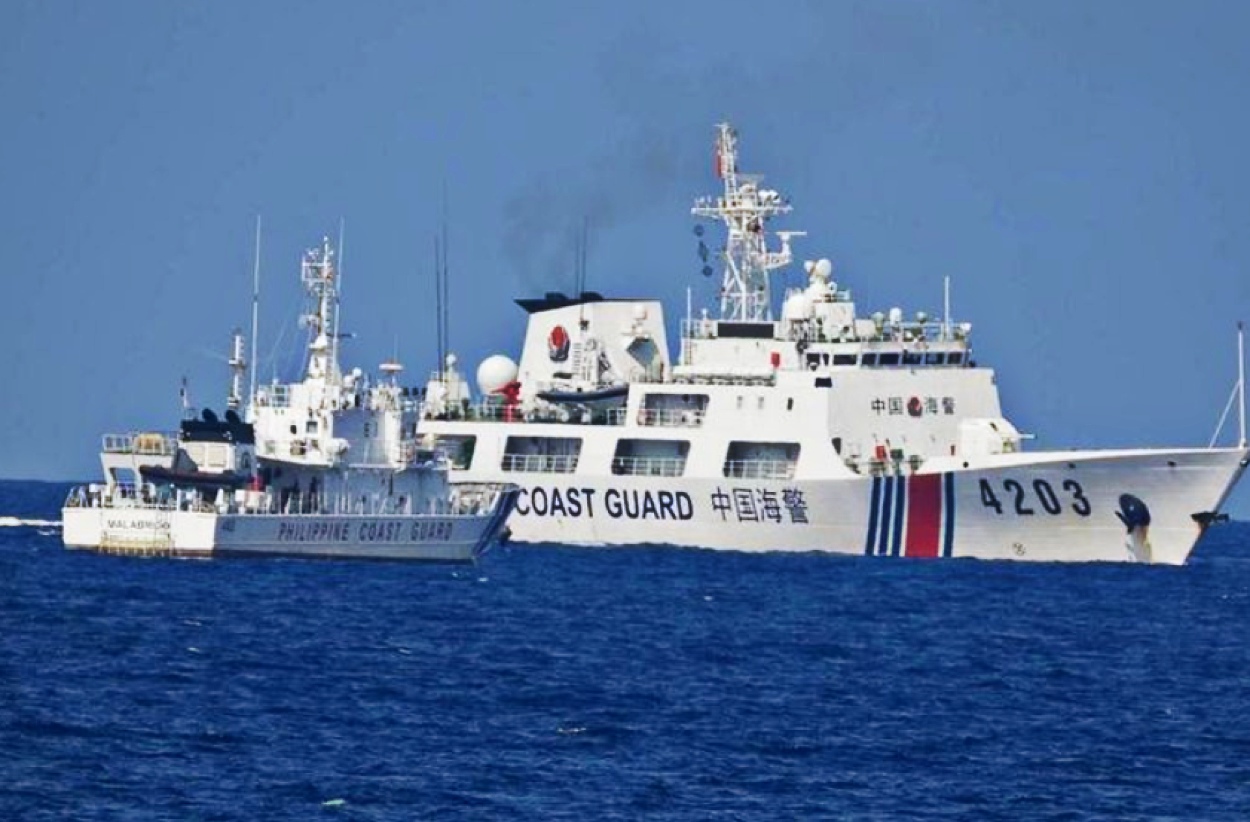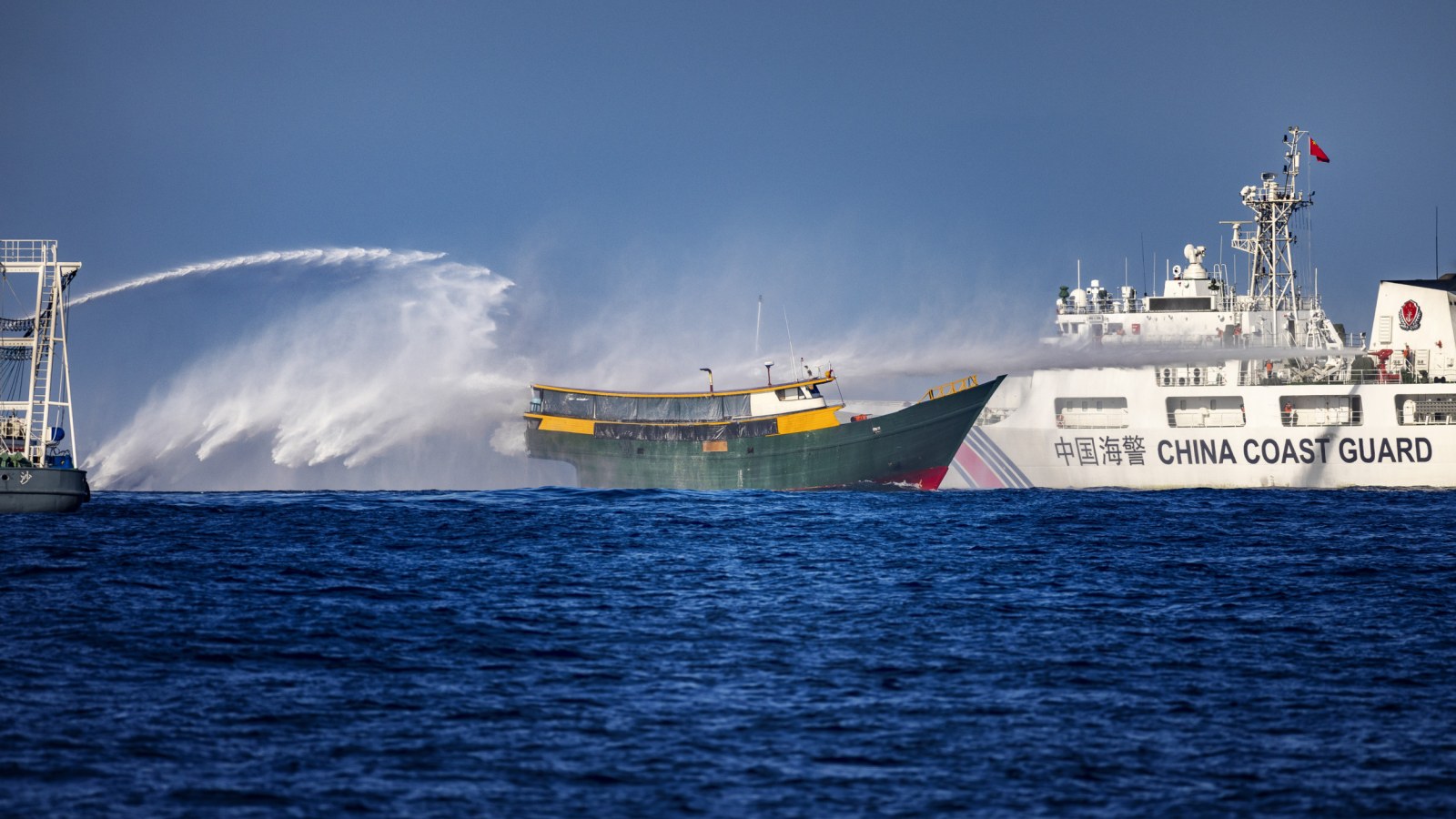When China sent dozens of coast guard and maritime militia vessels to block a civilian protest flotilla from the Philippines, it wasn’t only a show of strength but also a demonstration of how difficult it would be for weaker navies to stand up to Beijing’s naval might. Two days later, the Philippines and Japan finalized their largest maritime security project till now.
Under the project, Tokyo will fund the construction of five large patrol ships for the Philippines Coast Guard. Manila’s resistance to China’s belligerence in the South China Sea has become the face of the world’s open Indo-Pacific policy.
Philippine Secretary of Foreign Affairs Enrique Manalo and Japanese Ambassador to the Philippines Enzo Kazuya exchanged notes on the third phase of the Maritime Safety Capacity Improvement Project (MSCIP) during a ceremony today in Manila.
The Philippine government approved the project in 2023 to augment the capability of the Philippine Coast Guard to “respond to threats and incidents within the country’s maritime jurisdiction” with a focus on securing “important sea lines of communication in the West Philippine Sea, Sulu-Celebes Seas, and the Philippine Sea” according to a National Economic and Development Authority release.
The US $507 million project is funded by an Official Development Aid loan from the Japan International Cooperation Agency. Around $425 million will be utilized in constructing five 97-meter-long multi-mission response vessels (MRRV) and a five-year integrated logistics support package.
The patrol vessels are expected to be delivered between 2027 and 2028.
In 2023, Japan’s coast guard, the US, and the Philippines held trilateral maritime exercises in the South China Sea. It was the first such maneuver between them, as concern has been growing about China’s aggressive moves in the region.
Japan has already transferred two vessels – BRP Teresa Magbanua (MRRV-9701) and BRP Melchora Aquino (MRRV-9702) under the second phase of MSCIP. The ships were constructed at Mitsubishi Shipbuilding’s Shimonoseki Shipyard. Based on the Japan Coast Guard’s Kunigami class, the Teresa Magbanua class weighs slightly more at 2,260 GT and has a hangar for a single helicopter.
Described as “capital ships” in a Philippine Coast Guard release, the patrol vessels are among the most modern and largest in its fleet. Most active Philippine Coast Guard vessels, especially in the South China Sea, are of Japanese origin under the MSCIP.
Since 2013, Tokyo has provided loans for 12 patrol ships and other support initiatives, such as training and logistical assistance.
Philippine ties with the US and Japan have gained traction recently as the Philippine government became increasingly vocal about China’s conduct in the region. Manila has repeatedly highlighted large numbers of suspected militia lingering near Philippine-held features in the disputed Spratly Islands. China maintains the actions of its coast guard are legal and in its waters.
The Philippines Coast Guard has 62 patrol vessels. Notable among these vessels is the BRP Pampanga, equipped with secure communication systems, a helideck, underwater remotely operated vehicles, and high-speed rubber boats. The PCG operates four support ships for logistics, search and rescue missions, and 469 auxiliary boats.
In contrast, the Chinese Coast Guard is the largest in the world in terms of the number of ships and dwarfs the navies of the country’s regional neighbors combined.
The Chinese Coast Guard operates close to over 1,275 hulls while defending “China’s territorial sovereignty and maritime rights and interests.” However, over the years, the white hull operators have started operating in the “gray zone, ” posing a significant security challenge in the Indo-Pacific.
The Chinese Coast Guard has 225 ships of over 500 tons capable of operating offshore and additional vessels confined to closer waters. China possesses two of the world’s largest coast guard ships, each weighing 10,000 tons at full load.
Japan’s Changing Strategic Calculus
According to Manila-based Geopolitical Analyst Don McLain Gill, this maritime security investment by Tokyo into the Philippines is in line with its 2023 National Security Strategy (NSS). NSS, adopted on December 16, 2022, outlines the country’s approach to safeguarding its security and stability.

The NSS unequivocally identifies China as “the greatest strategic challenge” facing Japan. This recognition reflects concerns about China’s assertiveness in the region and its evolving strategic relationship with Russia.
Japan is closely monitoring China’s rising belligerence toward Taiwan. A key concern is the possibility of Chinese aggression spilling over into nearby Japanese territory, including the Senkaku/Diaoyu islands (which Japan controls and claims).
In short, Japan’s NSS emphasizes the need to address China’s actions, North Korea’s threats, and regional stability. It reflects Tokyo’s commitment to ensure its security and peace in the international community.
“The willingness of Tokyo to play a larger role in the Philippines’ security capabilities is a reflection of Japan’s latest National Security Strategy. The NSS seeks to illustrate Japan as a key security provider in the Indo-Pacific. Moreover, this more emphasized security-driven turn also reflects Tokyo’s realization of the need to do more to ensure the stability of the region amidst growing revisionist and expansionist forces, particularly China and North Korea.”
While the Philippines has been aggressively unveiling the tactics of the Chinese Coast Guard vessels, which are often accompanied by fishing vessels, Japan is another country being targeted by its aggressive maneuvers.
China operates the world’s largest fishing fleet, which has become known as a Maritime militia because it acts at the behest of the Chinese government.
China and Japan are entangled in a dispute over the Senaku Islands and the broader dispute over the Continental Shelf and Exclusive Economic Zone (EEZ) boundary in the East China Sea.
It is part of Beijing’s strategy to expand control over the East China Sea. Since 2012, China has been persistently trying to unilaterally change the status quo around the Senkaku Islands, which are administered by Japan but also claimed by China and Taiwan.

Chinese Coast Guard vessels operate almost daily in the contiguous zone, which extends for 12 nautical miles beyond the territorial sea. These Chinese ships intrude into the territorial sea around the Senkakus at a frequency of about three times per month.
Chinese coast guard vessels harass Japanese fishing boats operating near the Senkaku Islands. In one instance, Chinese vessels sailed on a Japanese fishing boat’s tail for 27 hours and came as close as 40-50 meters from its stern.
The countries have understood the benefits of collective security and are investing in augmenting the capabilities of littoral countries like the Philippines to withstand China’s maritime might.
- Ritu Sharma has been a journalist for over a decade, writing on defense, foreign affairs, and nuclear technology.
- The author can be reached at ritu.sharma (at) mail.com
- Follow EurAsian Times on Google News




